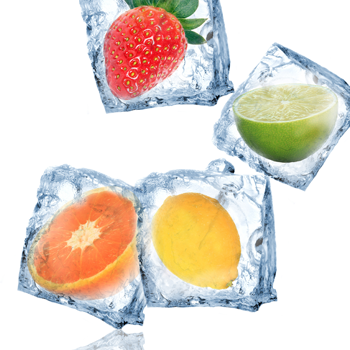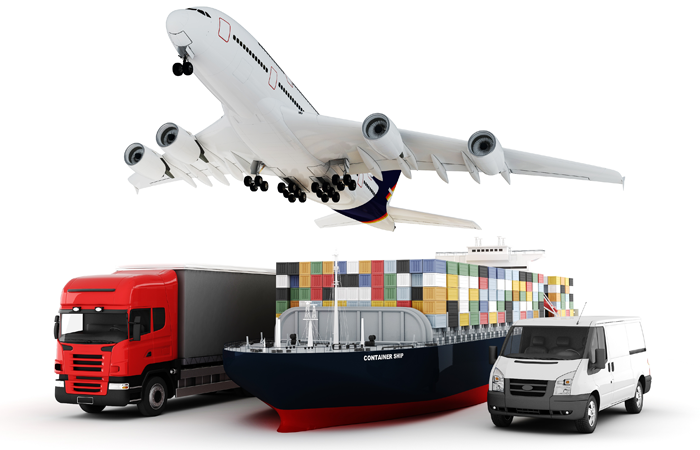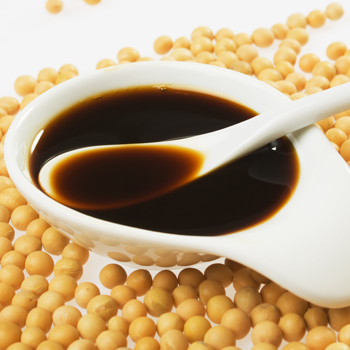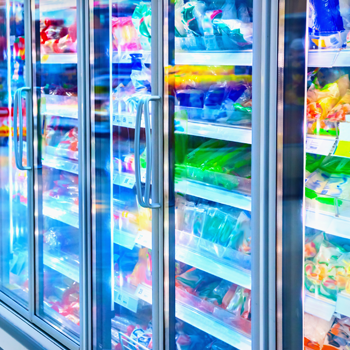ตลาดผักและผลไม้แช่แข็งทั่วโลก
กองบรรณาธิการ
Editorial Team
Food Focus Thailand Magazine
ข้อมูลจาก PR Newswire ระบุว่าตลาดผักและผลไม้แช่แข็งทั่วโลกมีแนวโน้มที่ดีขึ้น อันเป็นผลมาจากรูปแบบการบริโภคที่เปลี่ยนแปลงไป ตลอดจนความต้องการวัตถุดิบหรือส่วนผสม รวมทั้งกลิ่นรสใหม่ๆ ที่เพิ่มขึ้น ความต้องการผลิตภัณฑ์ในรูปแบบพร้อมรับประทานและเอื้อต่อความสะดวกสบายของผู้บริโภคที่เพิ่มขึ้นนี้มีส่วนขับเคลื่อนการเติบโตของตลาดผักและผลไม้แช่แข็ง โดยในช่วง 2-3 ปีที่ผ่านมา ตลาดผักและผลไม้แช่แข็งทั่วโลกมีความต้องการเพิ่มขึ้น และคาดว่าภายในปี 2570 จะแตะยอดถึง 751 ล้านตัน โดยมีอัตราการเติบโตเฉลี่ยสะสมอยู่ที่ร้อยละ 5.34 ต่อปี ตั้งแต่ปี 2559-2570
ทางด้านข้อมูลการศึกษาตลาดผลไม้แช่แข็งจาก Persistence Market Research ระบุว่าผลไม้เมืองร้อนมาแรง ขยายตัวด้วยอัตราการเติบโตเฉลี่ยสะสมต่อปีสูงสุดตั้งแต่ปี 2559-2565
เบอร์รีและผลไม้สีแดง…ยังคงแรงฤทธิ์ฉุดไม่อยู่
กลุ่มของเบอร์รีและผลไม้สีแดงคาดว่าจะมีมูลค่าส่วนแบ่งตลาดถึงร้อยละ 53 ในปี 2565 โดยมีก็อัตราการเติบโตเฉลี่ยสะสมร้อยละ 4.8 ต่อปี ในปี 2558 กลุ่มเบอร์รีและผลไม้สีแดงมีมูลค่าสูงกว่า 965 ล้านเหรียญสหรัฐ และคาดว่าจะมีมูลค่าสูงขึ้นกว่า 1.3 พันล้านเหรียญสหรัฐภายในปี 2565 ในด้านเชิงปริมาณพบว่าในปี 2558 เบอร์รีและผลไม้สีแดงมีปริมาณผลผลิตเกือบ 849,000 ตัน และคาดว่าจะเพิ่มขึ้นอีกมากกว่า 1,000 ตันภายในปี 2565 การเติบโตในเชิงปริมาณของเบอร์รีและผลไม้สีแดงจะอยู่ที่อัตราการเติบโตเฉลี่ยสะสมร้อยละ 3.7 ต่อปีในระหว่างช่วงปี 2559-2565
กล้วยและแตงโมโชว์ศักยภาพคลื่นลูกใหม่ เติบโตสูงสุดในเชิงมูลค่าในช่วงปี 2559–2565
คาดว่าตลาดกล้วยจะเติบโตในเชิงมูลค่าซึ่งน้อยกว่า 77 ล้านเหรียญสหรัฐในปี 2559 ไปเป็นเกือบ 107 ล้านเหรียญสหรัฐในปี 2565 โดยมีอัตราการเติบโตเฉลี่ยสะสมอยู่ที่ร้อยละ 5.6 ต่อปีอย่างมีนัยสำคัญ ส่วนแตงโมคาดว่ามีอัตราการเติบโตเฉลี่ยสะสมต่อปีใกล้เคียงกันที่ร้อยละ 5.6 โดยในปี 2559 นั้นมีมูลค่าตลาดน้อยกว่า 61 ล้านเหรียญสหรัฐ และจะก้าวกระโดดไปเป็นมากกว่า 84 ล้านเหรียญสหรัฐในปี 2565 ส่วนสตรอว์เบอร์รีมีมูลค่าตลาดสูงอยู่แล้ว โดยอยู่ที่มากกว่า 400 ล้านเหรียญสหรัฐในปี 2559
สตรอว์เบอร์รีครองแชมป์ในเชิงปริมาณ
สตรอว์เบอร์รีมีการเติบโตในเชิงปริมาณสูงสุด อัตราการเติบโตเฉลี่ยสะสมอยู่ที่ร้อยละ 3.9 ต่อปี โดยในปี 2559 มีผลผลิตน้อยกว่า 351,000 ตันเล็กน้อย และคาดว่าจะขยับขึ้นเป็นมากกว่า 441,000 ตันภายในสิ้นปี 2565
เบอร์รีและผลไม้สีแดง แผลงฤทธิ์การเติบโตเฉลี่ยสะสมต่อปีสูงสุดของตลาดผลไม้แช่แข็งในเอเชียแปซิฟิก
คาดว่ามูลค่าตลาดของเบอร์รีและผลไม้สีแดงแช่แข็งในเอเชียแปซิฟิกจะใกล้เคียง 95 ล้านเหรียญสหรัฐภายในสิ้นปี 2565 โดยขยับขึ้นจากน้อยกว่า 65 ล้านเหรียญสหรัฐในปี 2559 สำหรับในตลาดอเมริกาเหนือ เบอร์รีและผลไม้สีแดงแช่แข็งมีมูลค่ามากกว่า 376 ล้านเหรียญสหรัฐในปี 2559 และคาดว่าจะก้าวกระโดดมาเป็นมากกว่า 500 ล้านเหรียญสหรัฐภายในสิ้นปี 2565 โดยมีมูลค่าการเติบโตเฉลี่ยสะสมต่อปีอยู่ที่ร้อยละ 5.3
Globally, referred to the data from PR Newswire, the market for frozen fruits and vegetables has been increasing due to changing consumption patterns and growing demand for new ingredients and flavors. Improved consumer’s preference towards convenience foods is driving the market for frozen fruits and vegetables. Hence, the global market for frozen fruits and vegetables has witnessed continued demand during the last few years and is projected to reach 751 million tons by 2027, at a CAGR of 5.34% from 2016 to 2027.
For global market study on frozen fruits from Persistence Market Research, tropical fruits segment anticipated to expand at the highest CAGR during 2016-2022.
Red Fruits & Berries to Remain King throughout the Forecast Period
The red fruits & berries segment by fruit type is expected to reach around 53% market value share in 2022. Even though red fruits & berries is already the largest segment, it should still record a substantial CAGR of 4.8% in terms of value during the period of assessment. At the end of the year 2015, the red fruits & berries segment was valued at just over USD 965 Mn and this is predicted to rise to above USD 1.3 Bn by the end of the forecast period. In terms of volume, the red fruits & berries segment was pegged at almost 849 thousand tons in the year 2015, and this is widely anticipated to grow to above 1000 tons by the end of the year 2022. The CAGR for the red fruits & berries segment in terms of volume is 3.7% over the forecast period.
Banana and Watermelon Show the Greatest CAGR Potential in Value Terms
For the period 2016-2022, the Banana sub segment is expected to grow from a market value of under USD 77 Mn in the year 2016 to almost USD 107 Mn in the year 2022 with a significant CAGR of 5.6%. The Watermelon sub segment is also anticipated to record a similar CAGR of 5.6% that will allow it to jump from a market value of slightly under USD 61 Mn in 2016 to over USD 84 Mn at the end of the forecast period. It seems quite unlikely though that either the Banana or the Watermelon sub segments will be able to surpass the Strawberry sub segment in value terms as the latter was already worth more than USD 400 Mn in the year 2016 itself.
Strawberry is the Most Lucrative sub Segment in Terms of Volume
With respect to consumption, the Strawberry sub segment is anticipated to record the highest CAGR of 3.9% in terms of volume. From a volume of slightly under 351,000 tons in 2016, the Strawberry sub segment is predicted to rise to above 441,000 tons by the end of the year 2022.
Red Fruits & Berries Segment to Register the Highest CAGR in the Asia Pacific Frozen Fruits Market
The red fruits & berries segment will reach a market value of nearly USD 95 Mn in the Asia Pacific frozen fruits market by the end of the year 2022 from just under USD 65 Mn in 2016. The red fruits & berries segment in the North America frozen fruits market was already worth a little more than USD 376 Mn in 2016, and should jump to more than half a billion dollars by the end of the forecast period, with a value CAGR of 5.3%.






